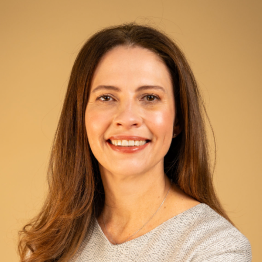Hair loss is a common issue that affects millions of people worldwide – both men and women. And as August is National Hair Loss Awareness Month, now’s an ideal time to shed light on the causes of hair loss and the different types people may experience… opening up important conversations and raising enhanced awareness and education on this often distressing condition.
Hair loss in numbers
Studies suggest that around 50% of men will experience some degree of male pattern baldness by the age of 50. For women, the statistics are also significant, with about 40% of women experiencing visible hair thinning by the same age. While hair loss can be distressing for all genders, understanding its root causes can help individuals take proactive steps to manage their hair health.
Causes of hair loss
Hair loss can occur for various reasons; ranging from genetic factors, to underlying health conditions and from hormones to medication. The most common causes include:
- Androgenetic Alopecia: Also known as male or female pattern baldness, this is the most common form of hair loss, affecting millions in the UK. It’s primarily driven by genetics and hormones, particularly dihydrotestosterone (DHT), which shrinks hair follicles over time, leading to thinning and eventual hair loss.
- Alopecia Areata: An autoimmune condition where the immune system mistakenly attacks hair follicles, leading to sudden, patchy hair loss. In some cases, this can progress to alopecia totalis (total loss of scalp hair) or alopecia universalis (total loss of body hair).
- Telogen Effluvium: This type of hair loss occurs when a significant stressor—such as illness, surgery, or emotional stress—pushes a large number of hair follicles into the resting phase (telogen) simultaneously. This results in widespread shedding, which can be alarming but is usually temporary.
- Traction Alopecia: Caused by repeated pulling or tension on the hair, this type of hair loss is often seen in individuals who wear tight hairstyles such as braids, ponytails, or extensions. Over time, this tension can damage hair follicles, leading to hair thinning or loss. A great example of this: Sophie Kasaei from Geordie Shore, who experienced alopecia after years of wearing a weave.
- Nutritional Deficiencies: Deficiencies in essential nutrients (such as iron, vitamin D, and biotin) can contribute to hair loss. A balanced diet is crucial for maintaining healthy hair growth.
Types of hair loss
Understanding the type of hair loss you’re experiencing is essential for determining the most appropriate course of treatment. The most common types include:
- Male and female pattern baldness: Gradual thinning on the scalp, typically following a specific pattern – receding hairline and balding crown in men, and thinning hair along the crown in women.
- Alopecia Areata: Sudden, patchy hair loss that can affect any hair-bearing area of the body.
- Telogen Effluvium: Diffused thinning across the entire scalp, often triggered by a stressor.
Non-surgical treatments for hair loss
While hair loss can be challenging to manage, there are several non-surgical treatments available that can help slow down or even reverse the process.
At Amanda Azzopardi Aesthetics, we begin the diagnostic process during your initial consultation with Amanda, during which time she’ll conduct a thorough assessment of your hair loss concerns and uses the innovative Fagron TrichoTest™(a genetic test for hair loss that analyses gene variations and lifestyle factors) which will enable her to devise a personalised, effective treatment plan for your specific needs.
A few of the treatment options offered at Amanda Azzopardi Aesthetics for hair loss include supplements, injectable platelet-rich fibrin (IPRF) therapy, exosome therapy, polynucleotides, LaseMD Ultra™ and specialised hair care systems like Calecim.
These non-surgical solutions work to stimulate hair growth, enhance hair density and promote improved overall scalp health. Exosome therapy targets existing stem cells in the scalp, whereas IPRF stimulates tissue repair and regeneration. Polynucleotides stimulate cell regeneration, improve blood circulation and reduce inflammation in the scalp; promoting healthier hair growth and reducing hair loss. Our innovative LaseMD Ultra™ device works to stimulate hair follicles, encouraging the growth of thicker, healthier hair. And specialised hair care systems like Calecim provide targeted nourishment and support for optimal hair health.
Experiencing hair loss? You’re not alone
Hair loss is a common yet often distressing condition that affects millions of people across the UK – and the globe. During National Hair Loss Awareness Month, we’re hoping to raise awareness of the various causes and types of hair loss, as well as the non-surgical treatments available to manage and potentially reverse the condition at Amanda Azzopardi Aesthetics. Whether through IPRF therapy, topical treatments or other non-surgical therapies, there are effective options that can help individuals regain their confidence and maintain healthy hair.
If you’re experiencing hair loss, get in touch today and take that all important first step towards finding a solution that works for you.




